Affiliate disclosure: This post may contain affiliate links. Please see our Privacy Policy.
Lambsquarters (Chenopodium album) is a fast growing wild weed that’s easy to find and identify worldwide. Also known as wild spinach, the leaves are tender, sweet and delicious. Since it’s a close relative to cultivated quinoa, you can also use the seeds as a wild foraged grain.
Not only is it edible, but lambsquarters also has medicinal uses!
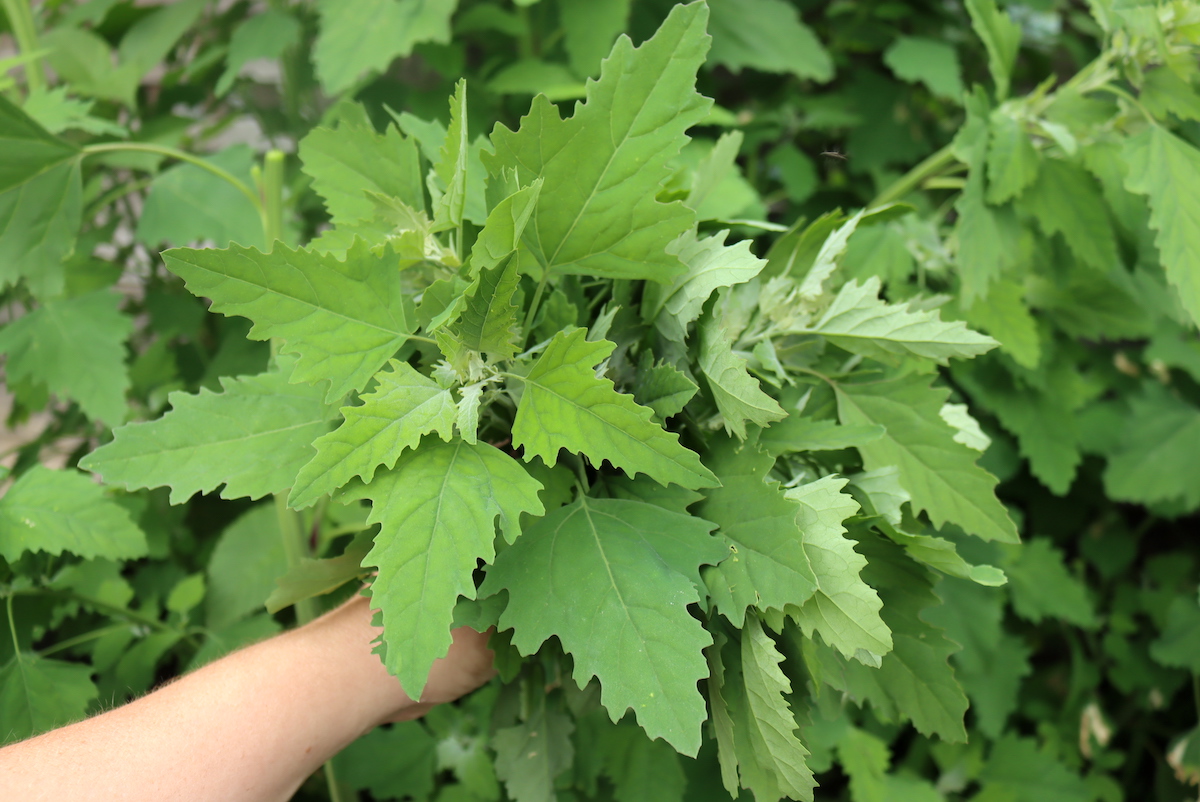
Table of Contents
Lambsquarters, or “goosefoot” as it’s sometimes called, is one of the best tasting wild edible weeds anywhere. Unlike dandelion greens, which are more like a bitter tonic, young lambsquarter leaves are sweet and tender like spinach or expensive microgreens.
While it’s considered an invasive weed in the US, it’s actually cultivated in the east where it stands up to tropical heat better than regular spinach. The leaves are highly nutritious, and are used to help prevent nutrient deficiencies in rural communities in developing countries.
I love to harvest the leaves and snack on them right out in the yard, but they’re also delicious cooked.
If you find a mature plant that’s gone to seed, the leaves won’t be quite as tender, but the seed (and seed heads) are edible too. It’s closely related to quinoa, another Chenopodium species, and you can harvest and cook the seed as an edible wild grain.
If that’s not enough, it’s also medicinal!
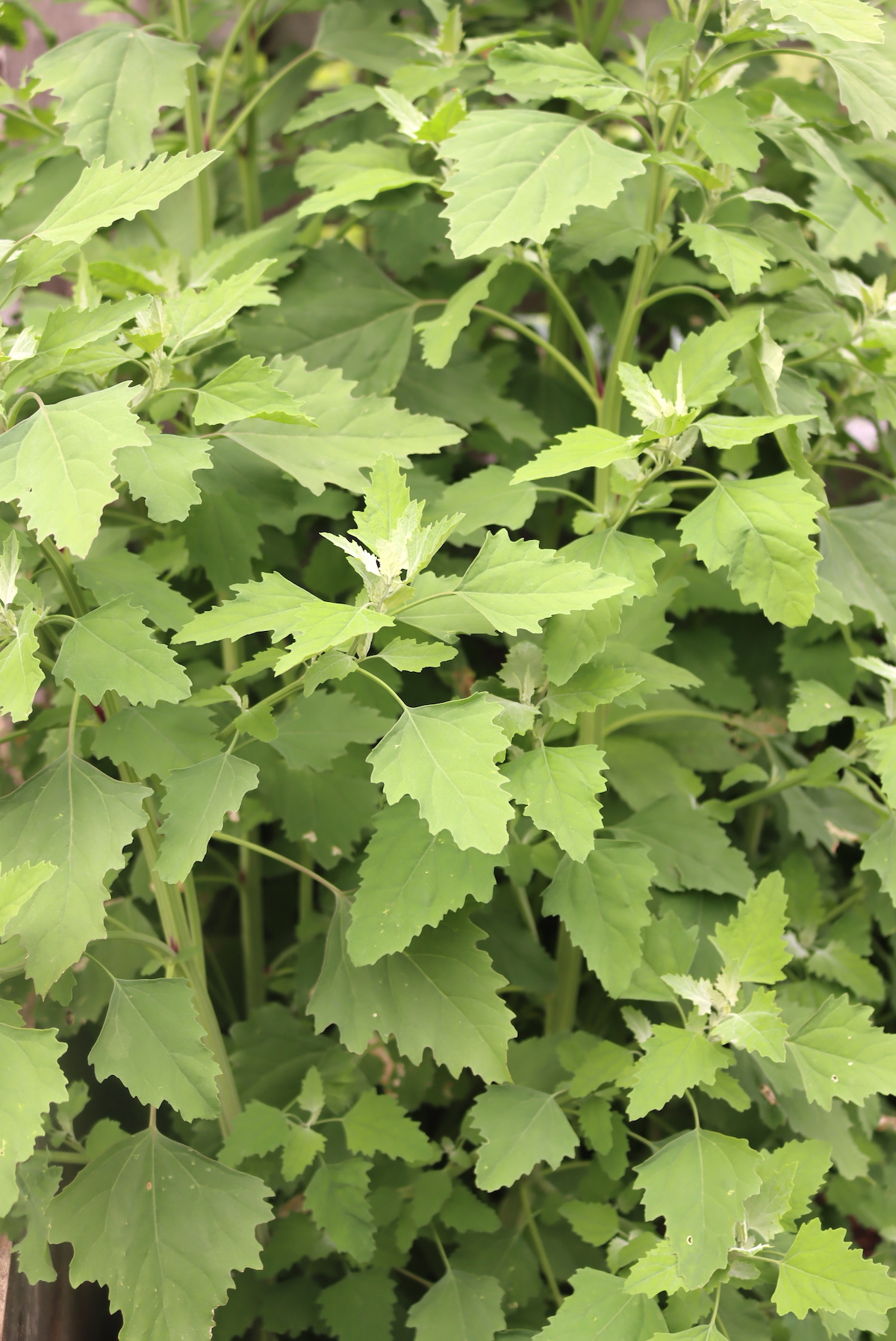
What is Lambsquarters?
Lambsquarters (Chenopodium album) is a fast-growing herbaceous annual. It’s native to Europe and eastern Asia but has naturalized worldwide. Lamsquarters has several other common names, including fat-hen, melde, white goosefoot, goosefoot, and wild spinach.
In some areas, Lambsquarters is extensively cultivated as a food crop, namely India where it goes by the name Bathua. While spinach wilts and bolts in the heat of the Indian subcontinent, lambs quarters (or Bathua) will grow like the weed (literally).
For the most part, it’s considered a noxious weed in North America as it can reduce the yield of corn, soybeans, and other major crops. Feel free to harvest as much as you can carry, as there’s no real way to “over harvest” this vigorous (but tasty) wild weed.
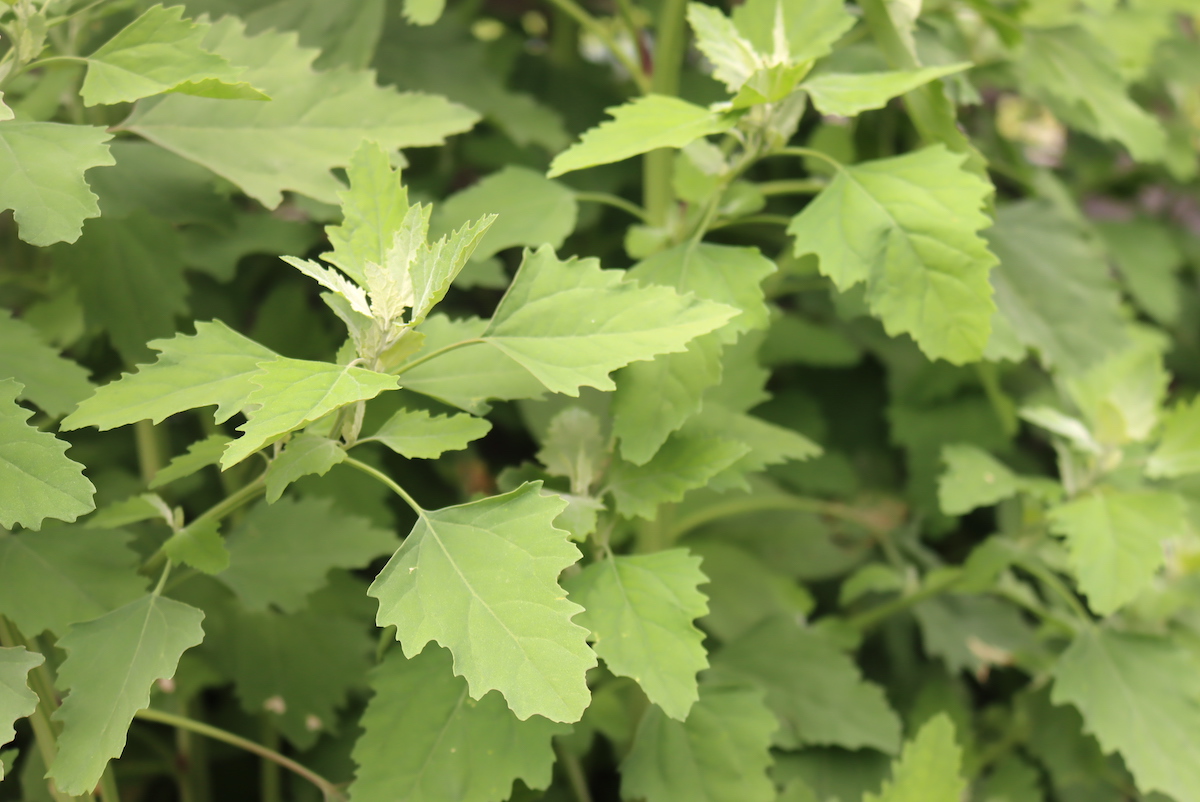
Is Lambsquarters Edible?
Lambsquarters is edible. The leaves, young shoots, flowers, and buds can be eaten raw or cooked. The seeds may be used like a grain. All parts of the plant can also be used as poultry feed.
Lambsquarters is also occasionally employed in traditional medicine throughout the world. It’s used both internally and externally to treat various conditions.
You should eat Lambsquarters in moderation as it’s high in oxalic acid (as are spinach, rhubarb and many other cultivated plants). Oxalic acid is safe in moderation, but excessive amounts can prevent your body from absorbing essential nutrients and minerals. It may also cause kidney stones.
For the same reason, Lambsquarters can also be toxic to sheep and swine when consumed in large quantities over a long period. It’s sometimes used as cattle feed but may affect the flavor of milk in dairy animals.
Avoid harvesting Lambsquarters on roadsides or in areas that could be contaminated with pesticides and other chemicals.
Lambsquarters Medicinal Benefits
Lambsquarters is more commonly used as food than medicine but is still occasionally employed by herbalists. Externally, it’s chewed and made into a quick poultice for skin inflammation, sunburn, bug bits, minor cuts, and rashes. For internal use, Lambsquarters is typically prepared as a tea to treat or prevent diarrhea, stomachaches, scurvy, gout, and degenerative diseases.
One modern study found that Lambsquarters is highly nutritious and has antioxidant and antibacterial properties. The study suggested that increased awareness and use of this plant could help prevent nutrient deficiencies, as well as some diseases in many rural parts of the world.
Results from another study suggested that Lambsquarter does have anti-inflammatory properties, supporting its use in helping to soothe skin irritations and other inflammation.
We also know that Lambsquarters is an excellent source of vitamin A, higher even than spinach or kale. It’s also a good source of fiber, protein, and other vitamins and minerals that support a healthy body.
Where to Find Lambsquarters
Lambsquarters has been traveling with human populations for hundreds of years, so their exact native range is unknown. However, it’s believed to be native to Europe and East Asia. Today it has naturalized worldwide.
You’re likely to find Lambsquarters in gardens, waste places, fields, lawns, roadsides, and stream beds. It prefers fertile nitrogen-rich soil but can often be found growing in any disturbed area.
Lambsquarters usually grow in partial to full sun. They thrive in moist, well-drained soil but will tolerate various soil types, including clay and sand, and will tolerate some drought once established.
When to Find Lambsquarters
Lambsquarters are a fairly early weed with seeds germinating as soon as the soil begins warming in the spring. You can find Lambsquarters growing between May and November, depending on where you live. It may come up earlier in warm areas like the deep south.
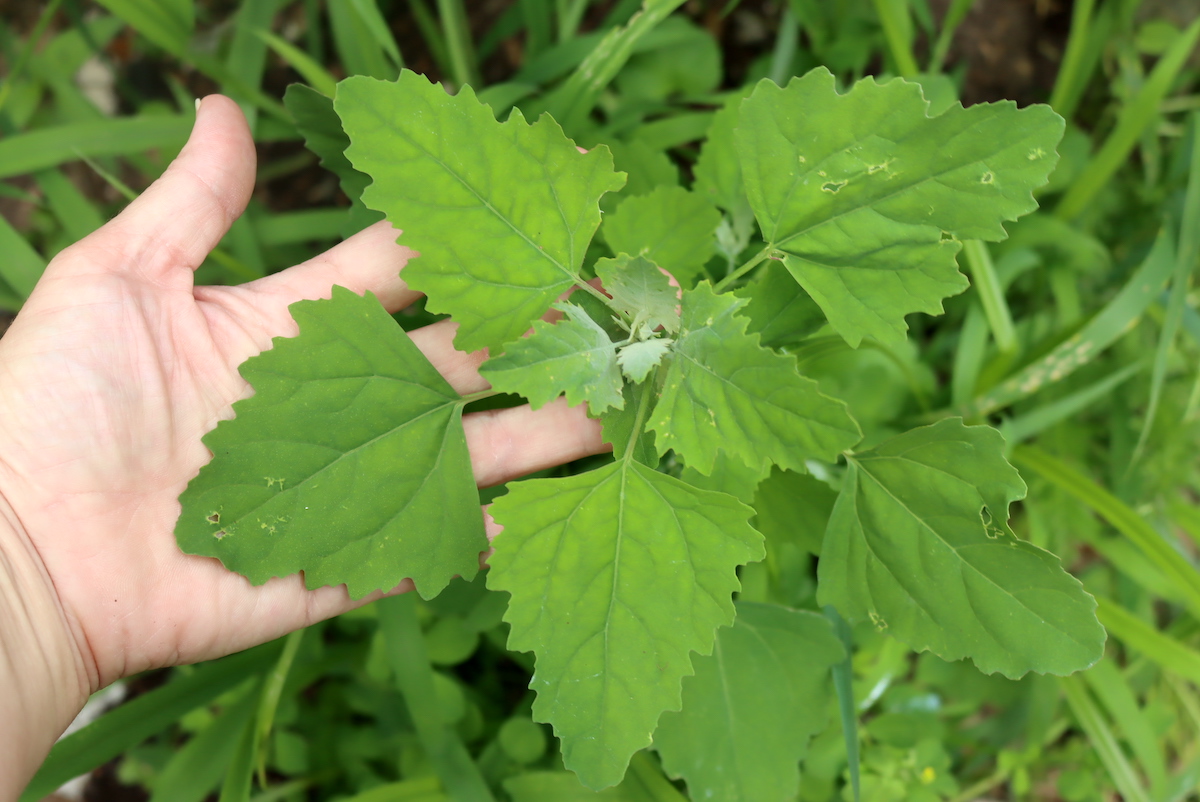
Identifying Lambsquarters
Lambsquarters grow to an average height of three feet but may vary from just a few inches tall to as high as 6 feet. It’s an erect plant with branching stems but may lodge with the weight of seeds later in the season.
The plant is sometimes easy to spot because of the powdery white coating that covers the new-growth leaves. It gives the plant a soft or frosty look near the branch tips.
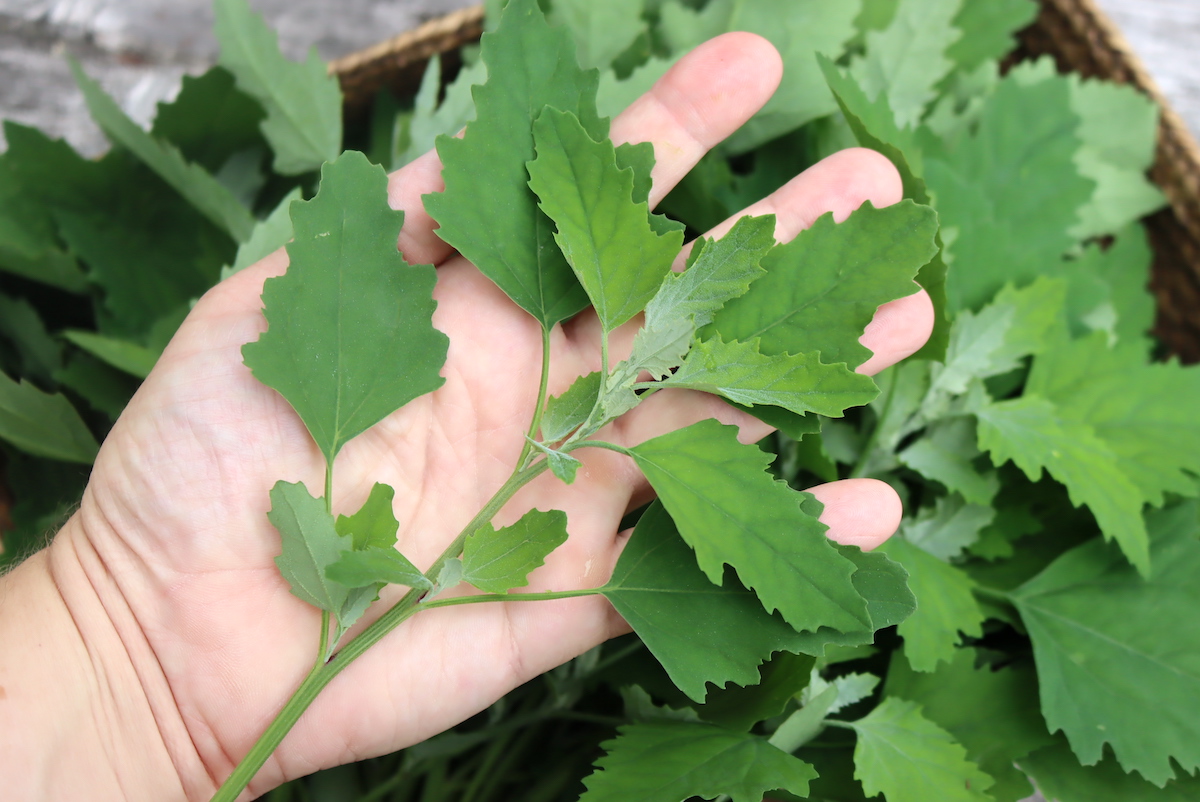
Lambsquarters Leaves
Lambsquarter leaves are alternate and irregularly toothed. They are also irregularly shaped but are often diamond, triangular, or lance-shaped. The leaves are typically 1 to 2.8 inches long and 1 to 2.4 inches wide.
Mature Lambsquarter leaves are typically green on top but may have a white or grayish powdery coating below. New growth leaves near the branch tips usually have a white or grayish powdery coating.
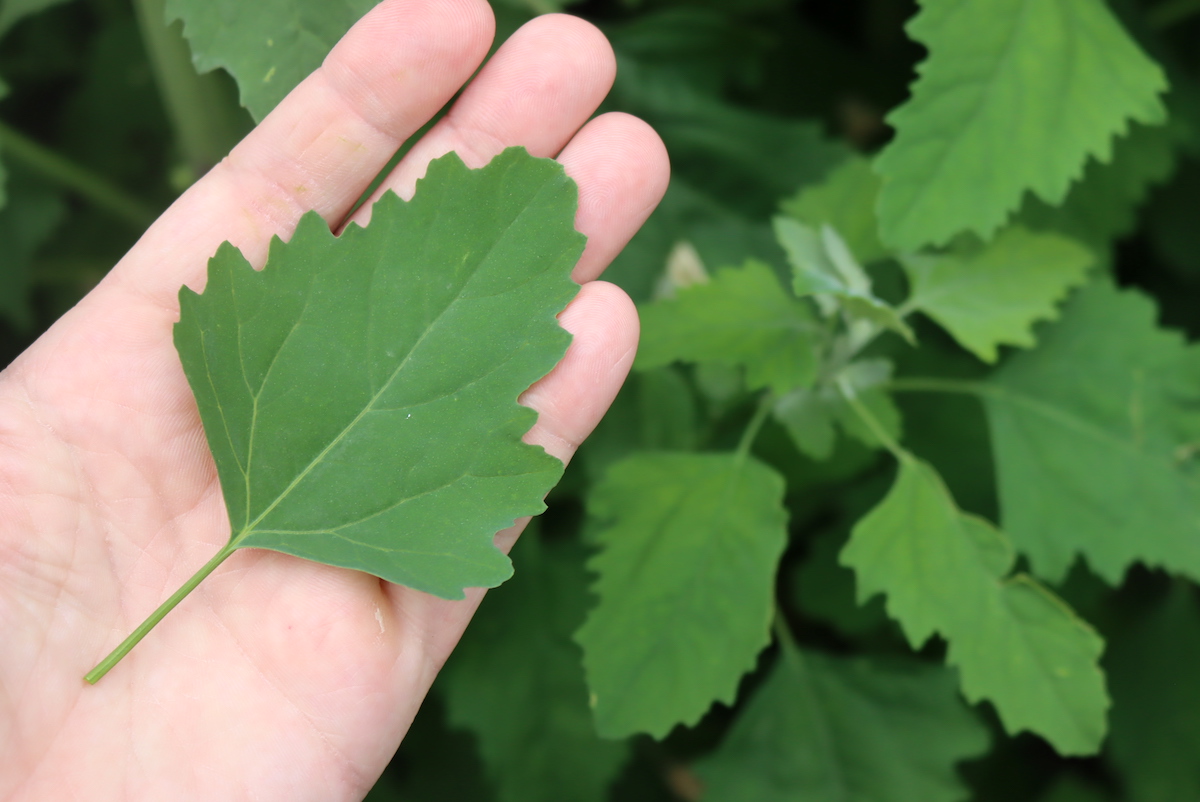
Lambsquarters Stems
Lambsquarter stems may grow up to six feet tall but are usually about three feet tall. They are moderately branched and conspicuously grooved with red, purple, or light green stripes.
Lambsquarter Tops
The very tops of lambsquarter plants are often covered in a dusty white coloration, and they almost seem dirty or sprayed. In reality, that is actually natural salts that the plant bio-accumulates. When the leaves are young, there’s so much salt on the surface of the leaves that it looks a downy white, but that color fades as the leaves get bigger and the salt is spread to a larger surface area.
You can actually use lambsquarter as an inland salt source, but more on that later.
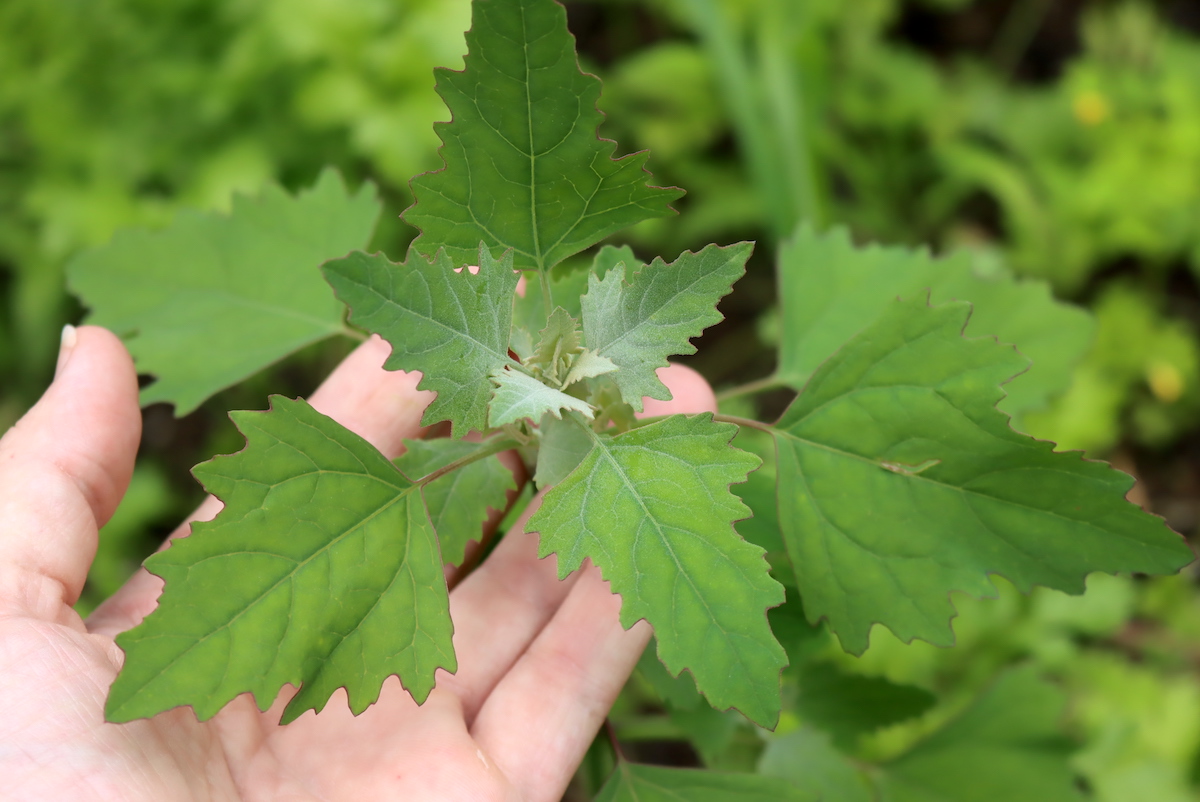
Lambsquarters Flowers
Lambsquarter flowers are small, green, and inconspicuous. They are radially symmetrical and have five tepals and stamens. The tepals may have a powdery white coating on the outer surface. The flowers form in clusters at the stem ends.
Lambsquarters Seeds
In late summer and autumn, the inconspicious lambsquarter flowers will turn into seed heads. They’re often green/white, but can sometimes take on a bright magenta color when fully ripe.
The texture of the seed head is somewhat like cauliflower, and sometimes the whole seed heads are harvested, cooked and eaten. (Or eaten raw right out in the field.)
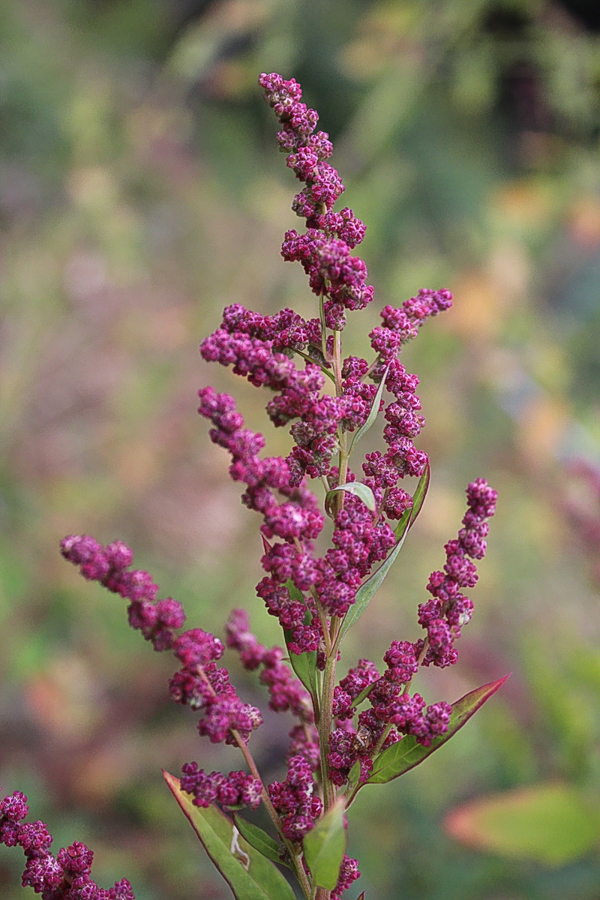
The acutal seeds of lambsquarter are shiny, black and lenticular. They’re encase in the “cauliflower like” fleshy seed heads of the plant.
Since lambsquarter is closely related to cultivated quinoa, the seeds are nutritionally similar. In fact, they’ve been eaten since neolithic times, and various “bog bodies” found in peat bogs had enjoyed lambsquarter seed as part of their last meal.
I have a full tutorial on harvesting and cleaning lambsquarter seed, as actually separating the seed from the chaff can be tricky.
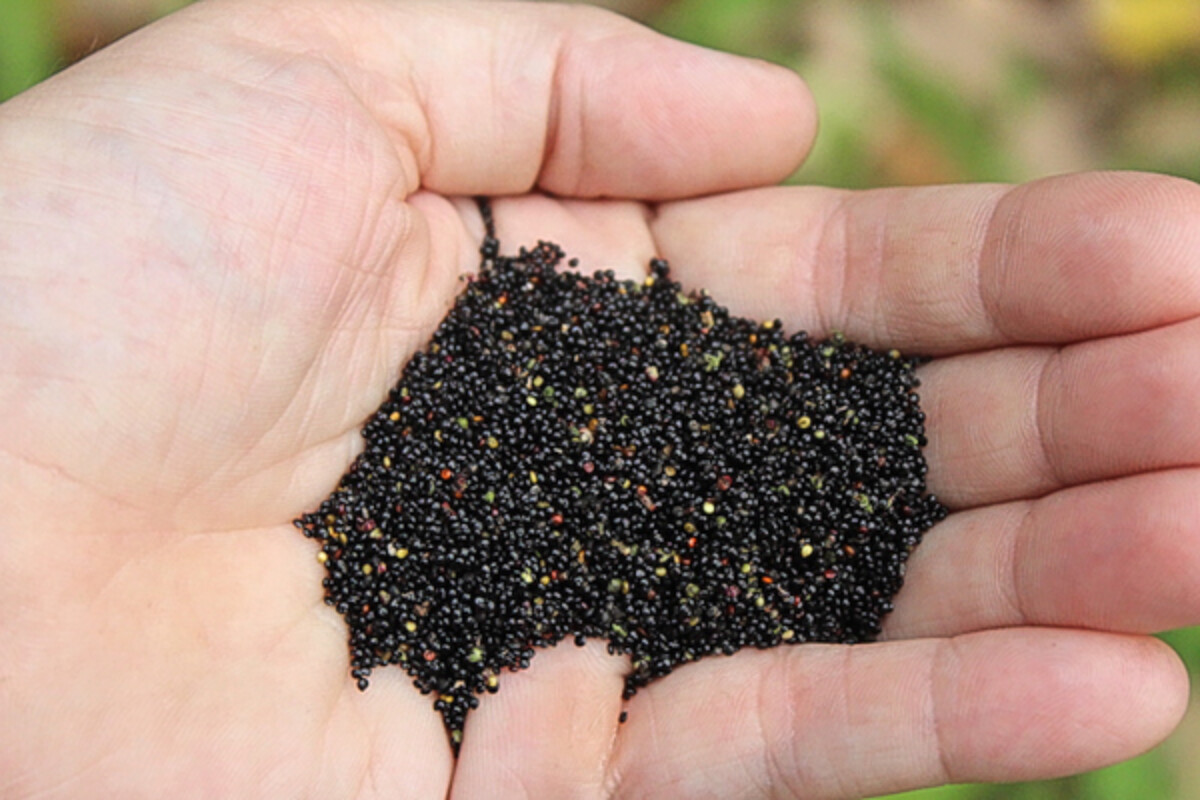
Lambsquarters Salt
Besides being a tasty edible spinach substitute, lambsquarters is also a natural inland source of salt.
The plants bio-accumulate salt from the soil and it looks like a downy white coating on their leaves. It’s most dramatic on the plant tops, when the leaves are young, but if you look closely you can still see it on older leaves. There’s the same number of white “dots” but they’re spread out over a larger surface area so it’s less noticeable.
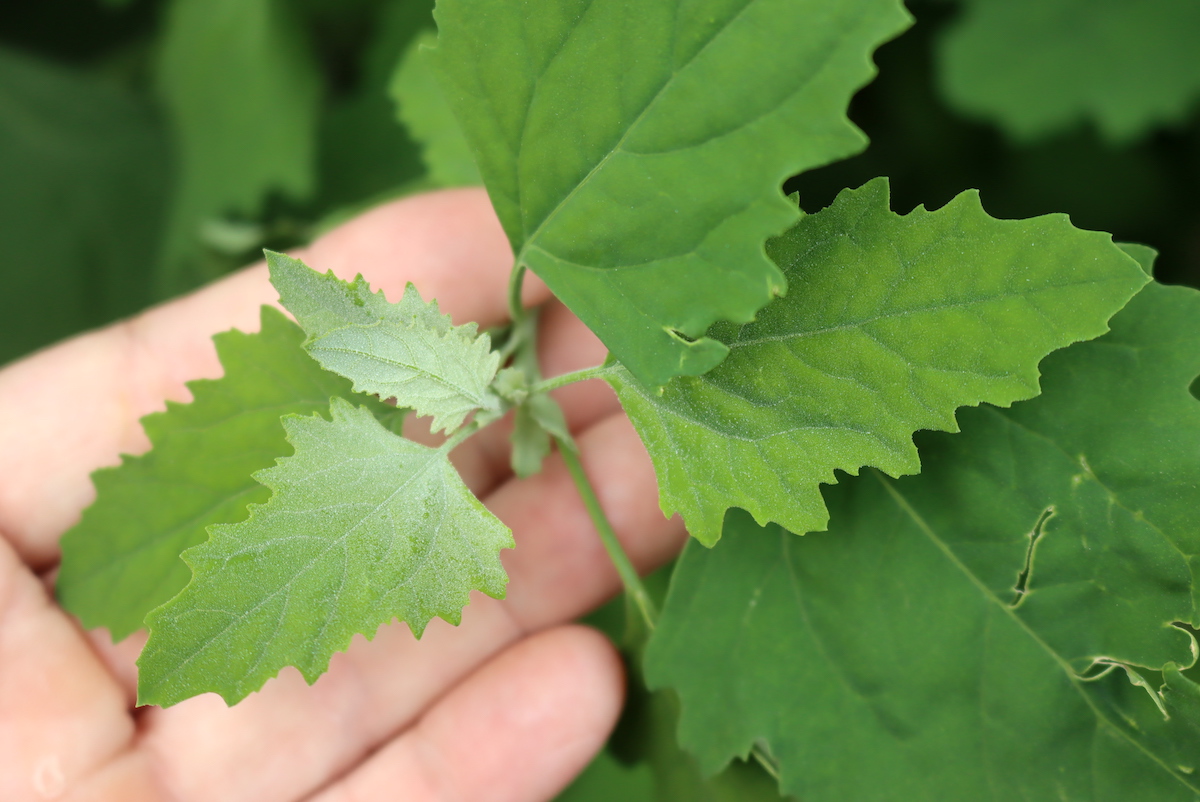
When you flip the leaves over, there’s even more natural salt coming out of the pores of the plant, especially on the smallest leaves.
That’s one of the identification characteristics, and the undersides of the leaves should have a dusky white color.
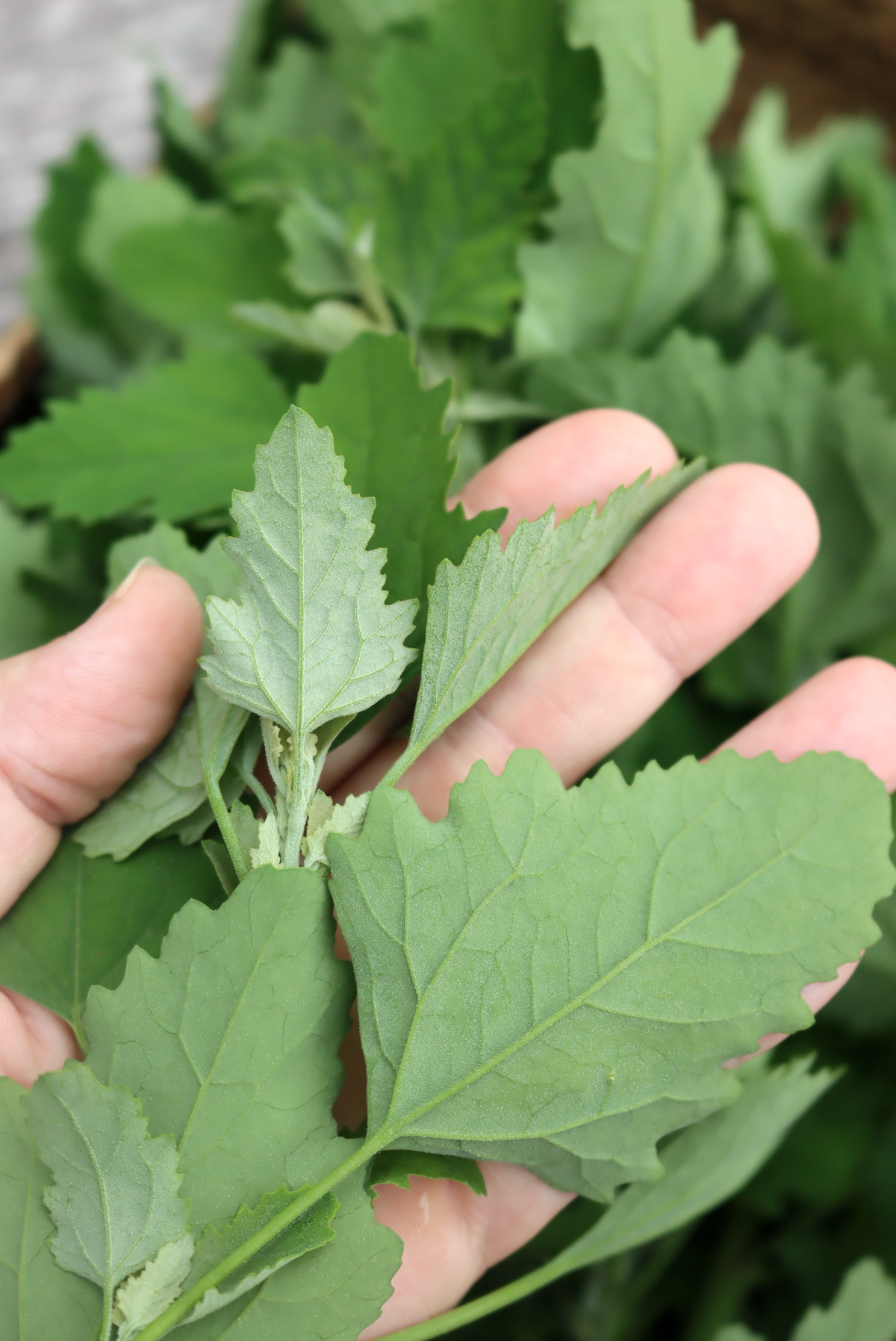
Since the dusky white color on the leaf undersides isn’t actually in the plant tissue, but rather salt on the surface, you can actually wipe it away with your finger.
To use lambsquarter as a salt source, the usually method is to dry it completely and then burn the leaves. You then use the resulting ash as a seasoning. (You can also do this with coltsfood, another wild weed that grows in similar habitats, and coltsfoot salt is better known.)
Since lambsquarters stores its salt on the outside of the leaves, burning isn’t strictly necessary. You could just soak it in water, and repeat that with many plants and the same water until the water is starting to get salty. Finally, cook it down to concentrate the salt.
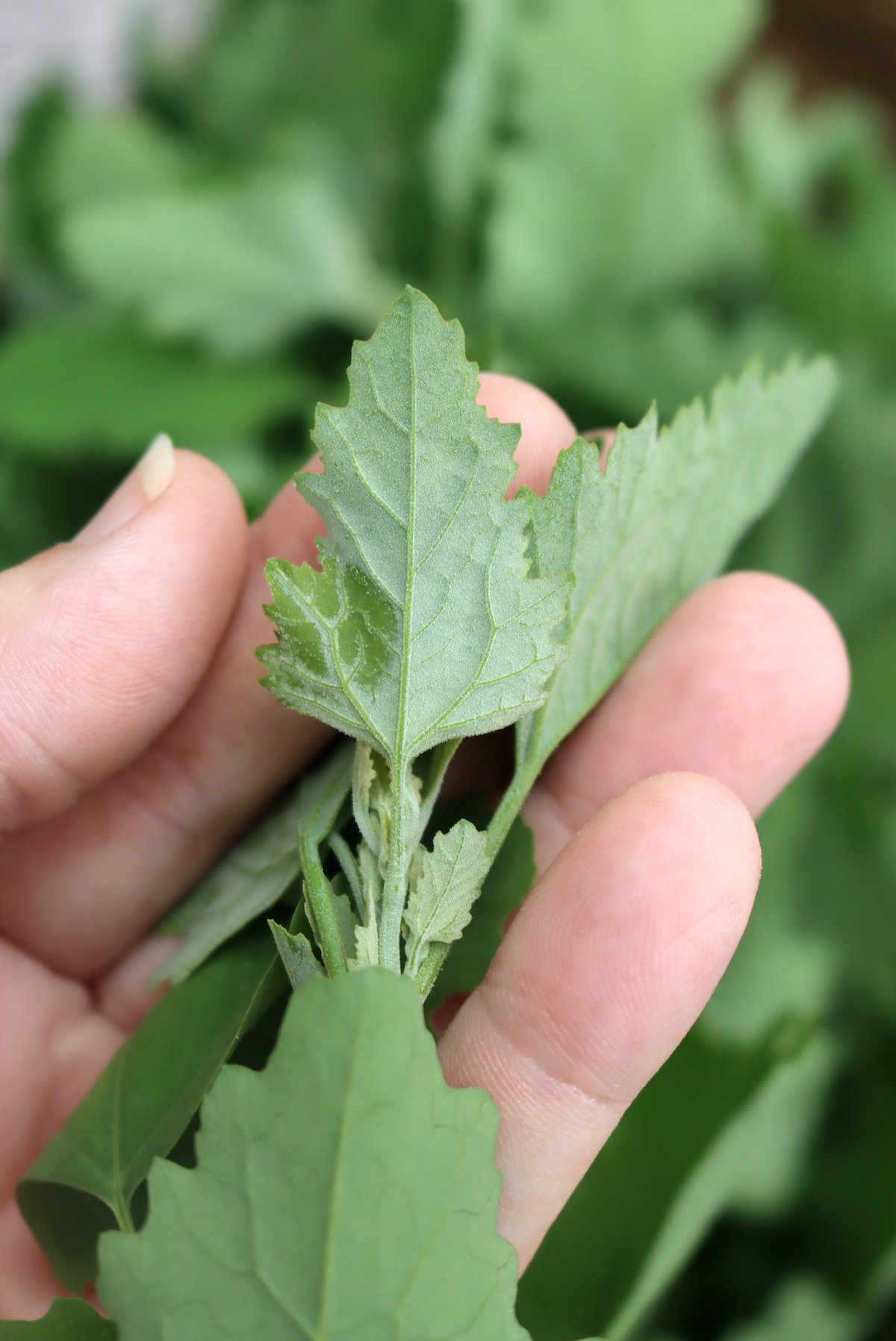
Lambsquarters Look-Alikes
Lambsquarter is sometimes mistaken for a related edible weed, Orache or Atriplex (Atriplex patula). However, Atriplex differs in a few ways:
- The leaves are more arrowhead-shaped or triangular, and the leaf bases have a lobe on each side so that the petiole begins or almost begins in an indent in the leaf.
- The female flowers have triangular bracts.
- They have a more branching, spreading growth habit.
Another look-alike is Black Nightshade (Solanum nigrum). Black Nightshade is not as scary as it sounds, but it should still be used with more care than Lambsquarters. Fortunately, it also differs in several easy-to-spot ways.
- The leaves are ovate or egg-shaped and may have wavy margins or be sparsely toothed but are less consistently toothed than Lambsquarters.
- The petioles are “winged,” meaning that a tiny strip of leaf runs all the way down to the stem.
- The flowers are larger at 1/4″ to 1/3″ across, white or violet, and have five petals.
- Black Nightshade produces small berry clusters that ripen from green to black.
Lastly, Lambsquarters can be mistaken for some Amaranth species (Amaranthus spp.). Amaranth is distinguished from Lambsquarters in the following ways:
- Amaranth leaves have smooth margins and lack a powdery coating.
- Amaranth flowers form on bristly inflorescences at the top of the plant.
Harvesting Lambsquarters
In most places, lambsquarter is considered an invasive weed, and you don’t have to worry about over harvesting. Be careful where you harvest, as it often grows on road sides and waste places that could be contaminated or sprayed. Be sure to harvest from a clean location.
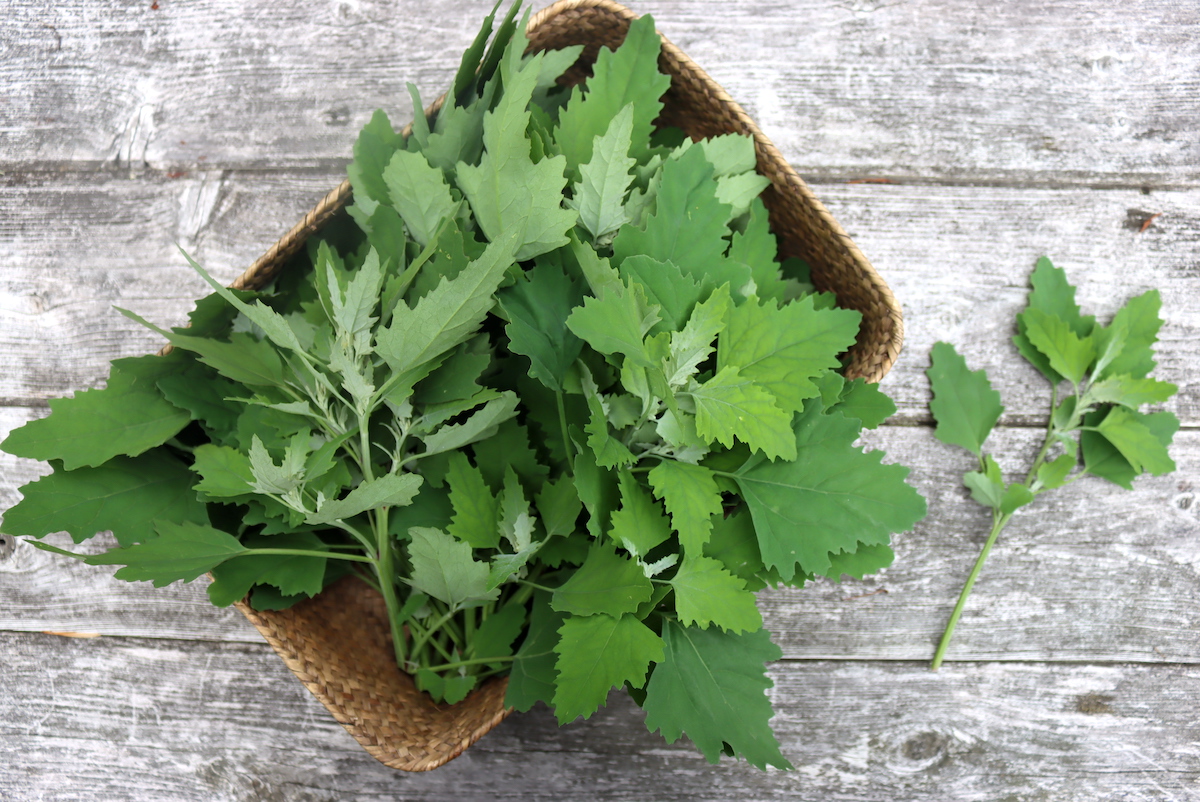
The plants can get quite large, and I’ve seen them at 5 to 6 feet tall in fertile locaitons. Usually, they’re more like 2 to 3 feet tall when growing under stress.
Older leaves can be tough, at bit stringy, and ever so slightly bitter. Even still, the oldest leaves are still quite good cooked.
For the best flavor and texture, harvest young lambsquarter seeds and side shoots. Even the tallest plants still put out young, tender side shoots.
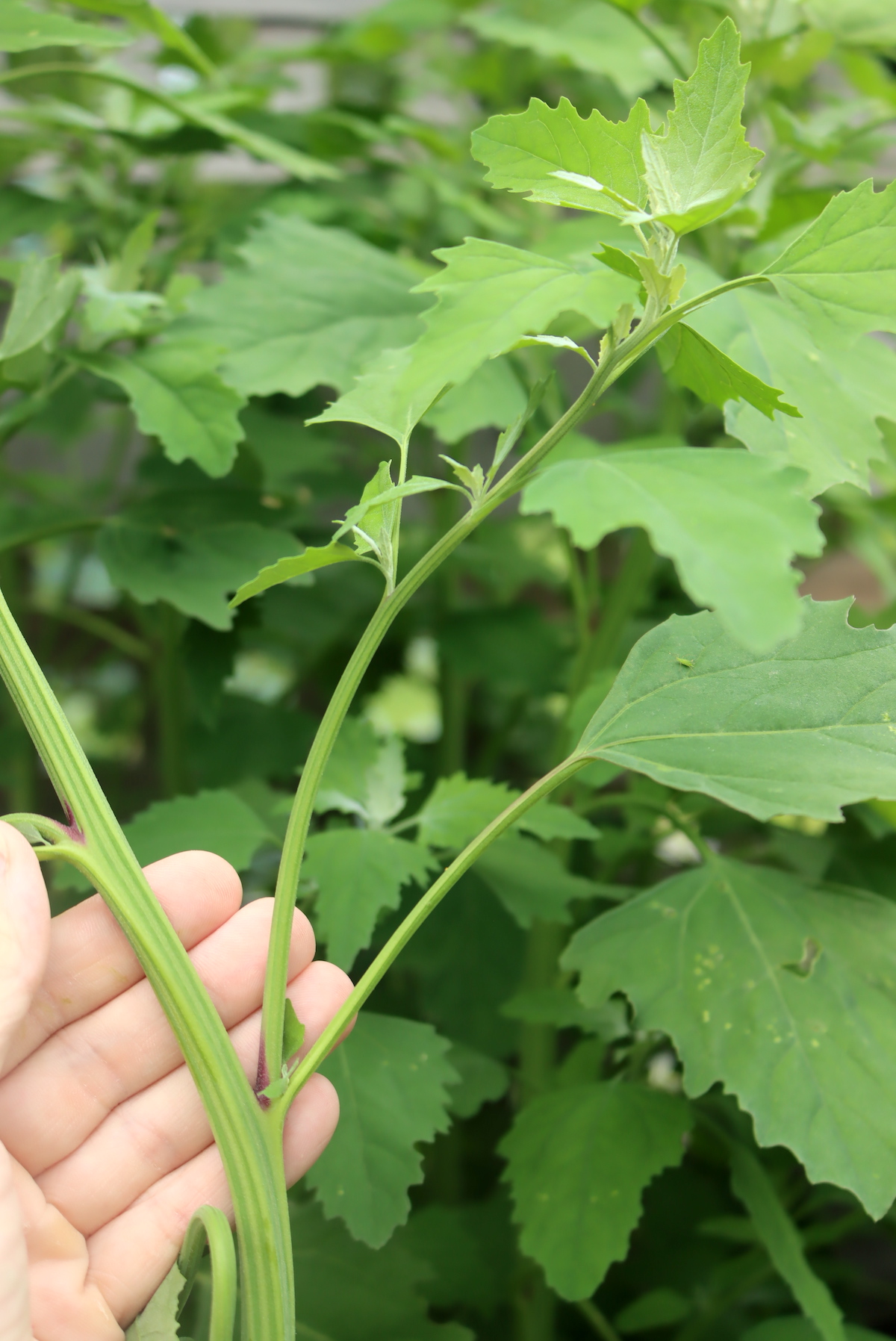
Since lambsquarter is a relatively sweet, mild wild weed…it tends to attract the same pests as lettuce. Namely, aphids, which drink the vascular fluids within the plant.
They’re nothing to worry about, and you can easily wash them off (as you would wash them off of lettuce you harvest from your garden). But, you should keep an eye out for ants.
The ants, believe it or not, actually tend lambsquarter aphids like cattle, and they consume a nectar like substance that the apids produce. The ants, in turn, will defend their aphids (and the plants they live on) like any rancher would defend their cattle from wolves.
Check for ants before harvesting, as they can give you a nasty sting. Usually, the leaves will curl when they have a particularly bad aphid infestation, which usually occurs on ant “aphid farms.”
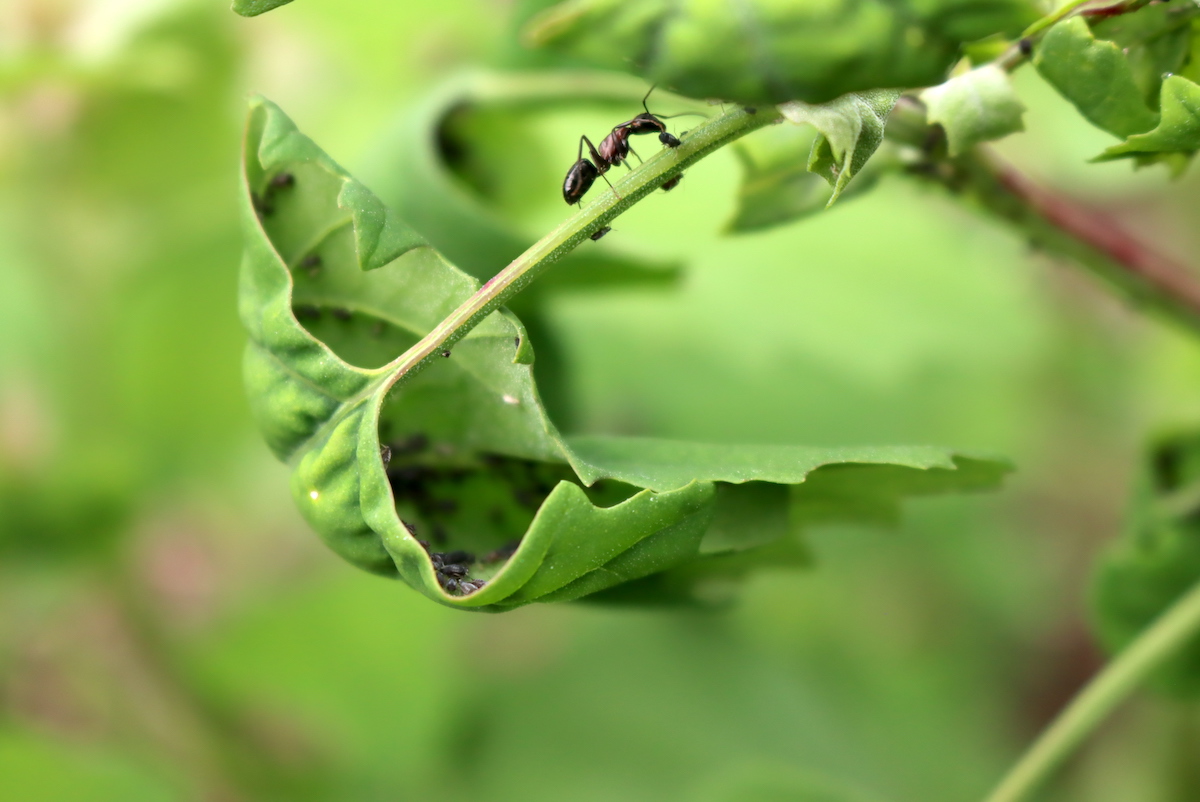
How to Use Lambsquarter
As it is a plant we often need to weed out of our gardens, it’s great to find a use for Lambsquarters. Thankfully it can be used as both food and medicine for humans and animals.
One of Lambsquarter’s common names, wild spinach is a good indicator of its versatility in the kitchen. Add the young shoots, leaves, buds, and flowers to salad, smoothies, or pesto. You can also cook it as you would spinach, adding it to stews, egg dishes, and stir-fries.
Lamsquarters dehydrates well and can be eaten as a snack or added to various winter recipes like soups and sauces.
Lambsquarter seeds can also be eaten. You can use the seeds raw or roast or dry and grind them. They are excellent in hot cereals and baked goods. Using the seeds in this manner has a long history. Archeologists found the seeds mixed with other grains in Viking Age, Iron Age, and Roman sites. Researchers also found evidence of them in the stomachs of Danish bog bodies.
In India, Lambsquarters are known as bathua, and both the leaves and seeds are used. The leaves and young shoots are often added to soups and stuffed breads, while the seeds are used to make cooked cereal and mildly alcoholic fermented beverages.
In Nepal, Lambsquarters are also commonly used, including in two dishes called saag and masaura. Saag is made by stir-frying the Lambsquarter leaves with spices, chilly, and diced garlic. Masaura is made by dipping the leaves in a lentil batter and letting them ferment in the sun for a couple of days. The masaura is typically added to a curry.
Medicinally, Lambsquarters can be used in teas, poultices, salves, and ointments. Another of Lambsquarter’s common names, goosefoot, hints at its use as an animal feed. Both the leaves and seeds are sometimes cultivated and fed to poultry and other livestock.
Lambsquarters Recipes
Try any of these delicious lambsquarters recipes:
- Cook lambsquarter stew with this recipe from Nan Away Farmstead.
- Impress your dinner guests with this Wild Spinach Dip from the Forager Chef.
- Grab some fresh eggs and Lambsquarter leaves and whip up this frittata from Food52.
- Make fun salt and vinegar Lambsquarter chips! Try this easy recipe from Edible Wild Food.
Or, do as I do, and quickly cook lambsquarter greens in a bit of butter or ghee to serve beside curry, like this homemade red lentil dahl with cooked lambsquarter leaves.
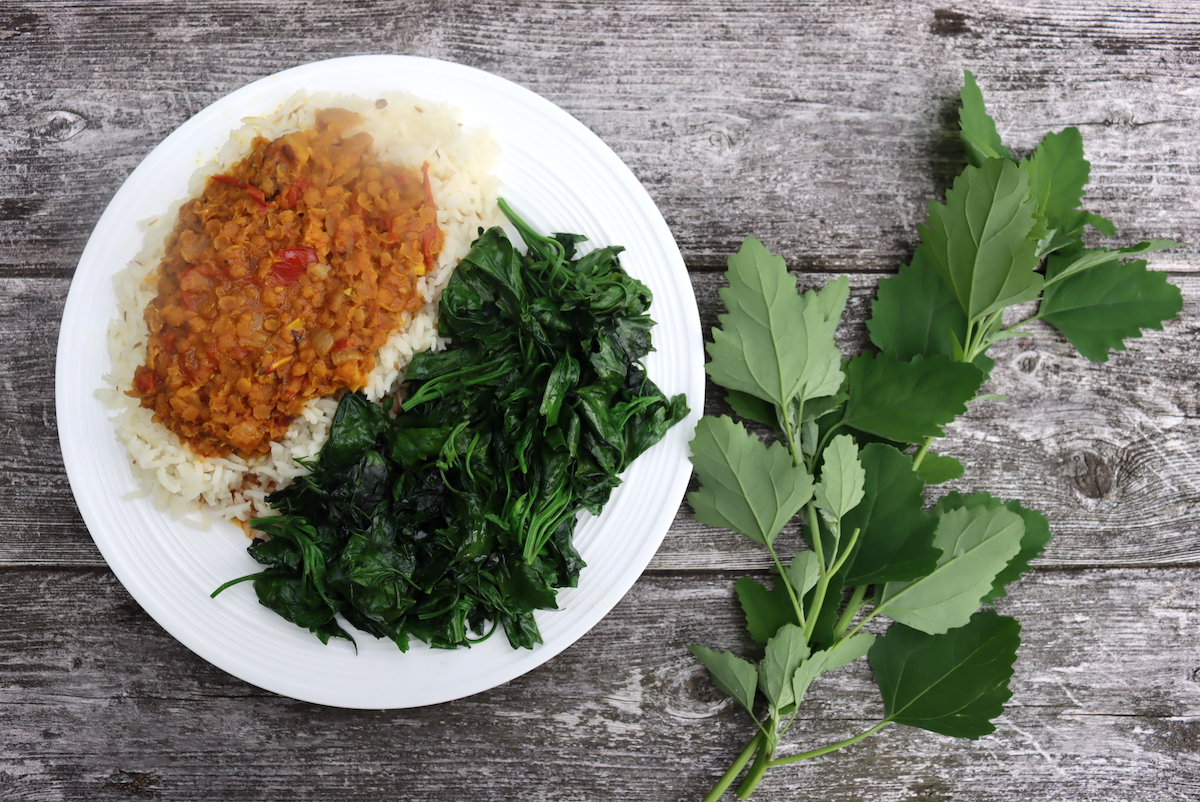
Edible Wild Weeds
Looking for other edible wild weeds?
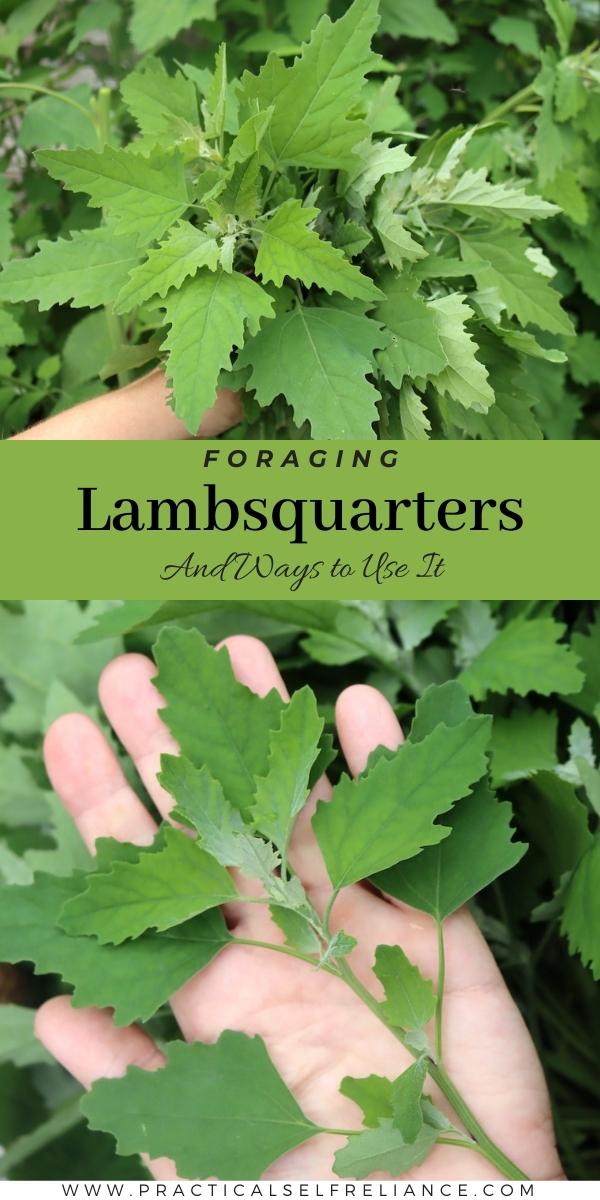

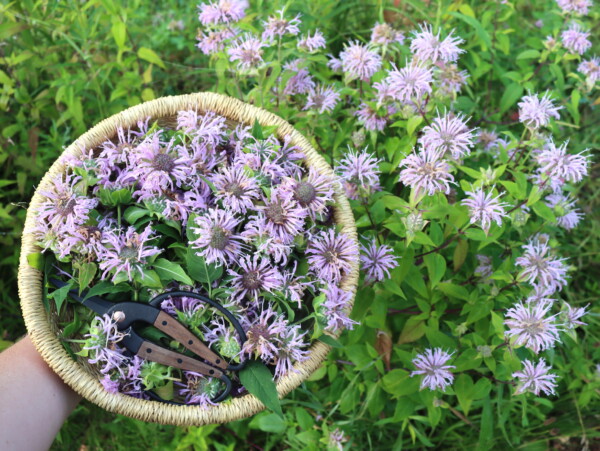
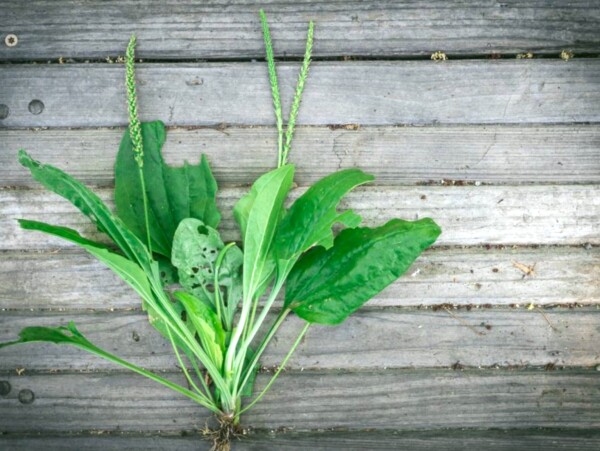
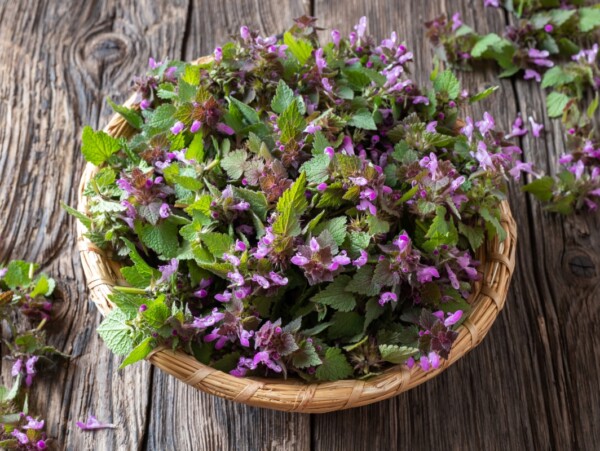










Your subscribe button isn’t hot. Have some one from the outside try it, not you.
I would like to subscribe…
cthegarden@gmail.com
Thank you
I just subscribed you, you should be all set.